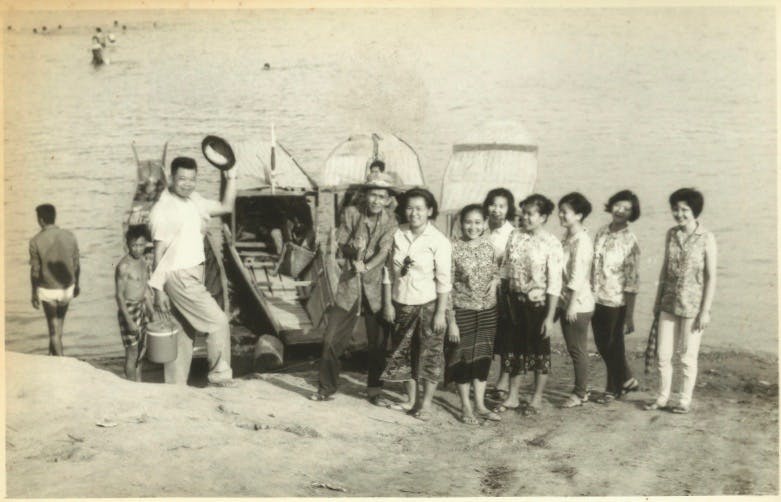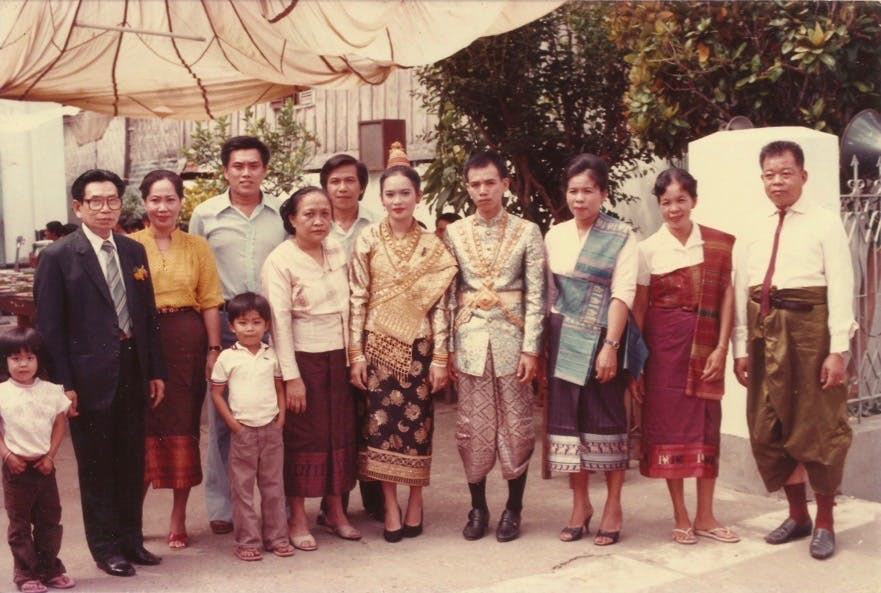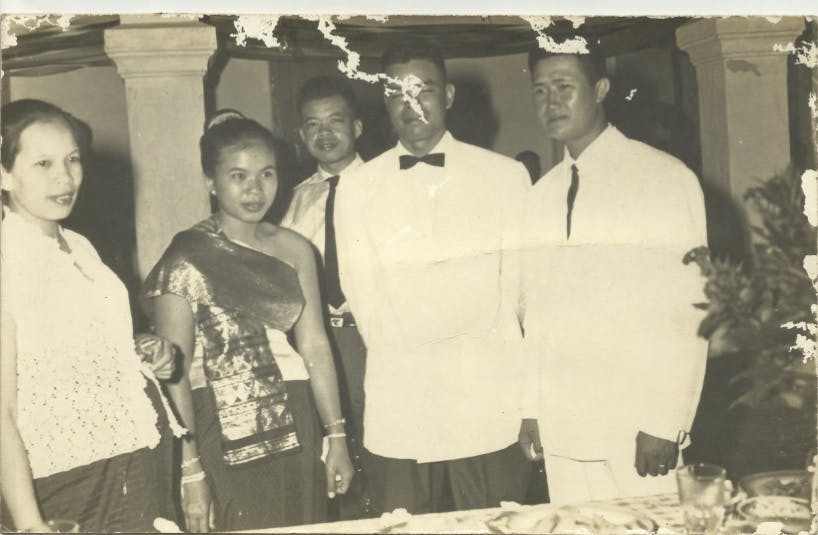History
Parasol Blanc begins is story during the reign of King Sisavang Phoulivong. Born in 1885, he was king of the Kingdom of Luang Prabang and later the Kingdom of Laos from April 1904 until his death in October 1959. It is stated he had up to 50 children by as many as 15 wives. Luang Prabang was then a French protectorate within French Indochina. During the early years of his reign, the French built a modern palace for him, the Royal Palace of Luang Prabang that also served as his private residence. During his reign, he united Houaphan, Houakhong, Xiengkhouang, Vientiane, Champassak and Sayaboury. He was a lifelong supported of French rule in Laos. In 1945, he refused to cooperate with Laos nationalists and was deposed when the Laos Issara declared the country independent. In April 1946, the French took over once again and he was reinstated as the king of Laos.
One of his royal followers was Mr Phao Vithamaly, head of the commercial department of Northern Laos. Born in 1893, he married a striking Laos beauty by the name of Khamla. They had five children together - Tieng, Peng, Pheng, Phan and Piou. As part of the administration, Mr Phao and his family were given a royalty status. The eldest born Tieng, unlike his father, was an entrepreneur and ultimately the founder of Parasol Blanc. While many often marvel at the vast numbers of temples in Laos, one hardly asks the question how these temples are built. Part of the answer lies in PARASOL BLANC. The earth from the pond in the centre of the property was used to make a large number of bricks to assist in building the numerous temples in Luang Prabang and around the country. Until today, Theravada Buddhism remains the most prominent organised religion in the country, serving as the focus of religious practice as well as the centre of community life in rural areas. In most lowland Laos villages, religious tradition remains strong. Nearly all Buddhist men will spend some part of their lives as monks in temples, even if for only a few days. For many in the rural areas, it's their only opportunity to receive an education.
Over time, removal of the best quality soil for the activity of brick making forms a crater. From an offshoot to the Mekong River that used to meander through the property, this and the heavy monsoonal rains formed a pond. The pond at Parasol Blanc along with the neighbouring (now classified) "wetlands" are the results of nature and the success of the quality of bricks produced from this little corner of Luang Prabang.
Today, the pond is a beautiful lotus pond, nestled right in the middle of Parasol Blanc and protected by the UNESCO Free Zone. Ever the entrepreneur, Tieng wanted to make sure to keep this special land 'alive'. He started rearing fresh water fish for trade and worked with another keen entrepreneur who started building villas around the pond to ensure the story of it's amazing history could be shared to future generations.
The logo of Parasol Blanc pays homage to the history, incorporating the "white parasol" from the crest and flag used during the time of the Royal administration.



